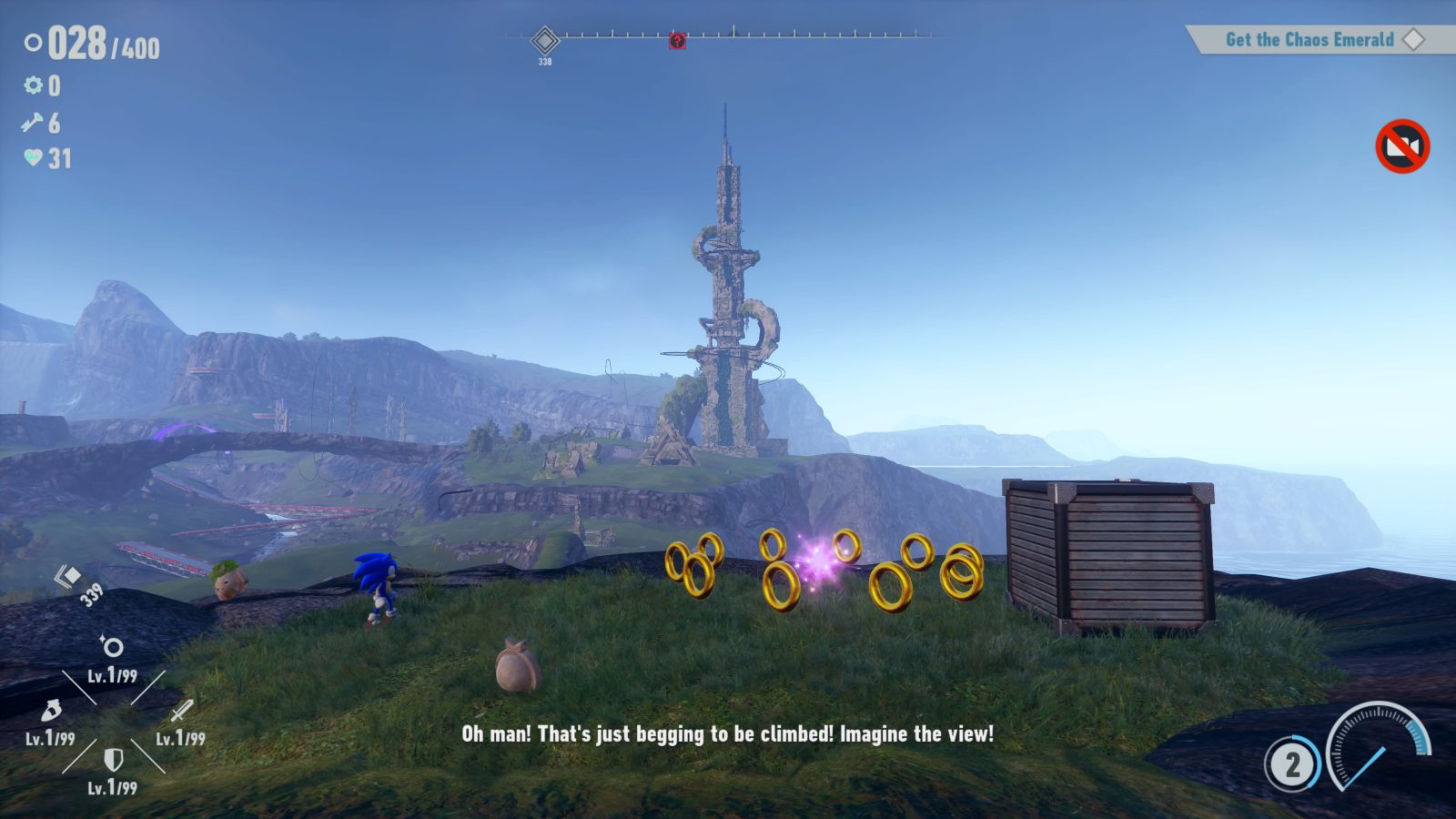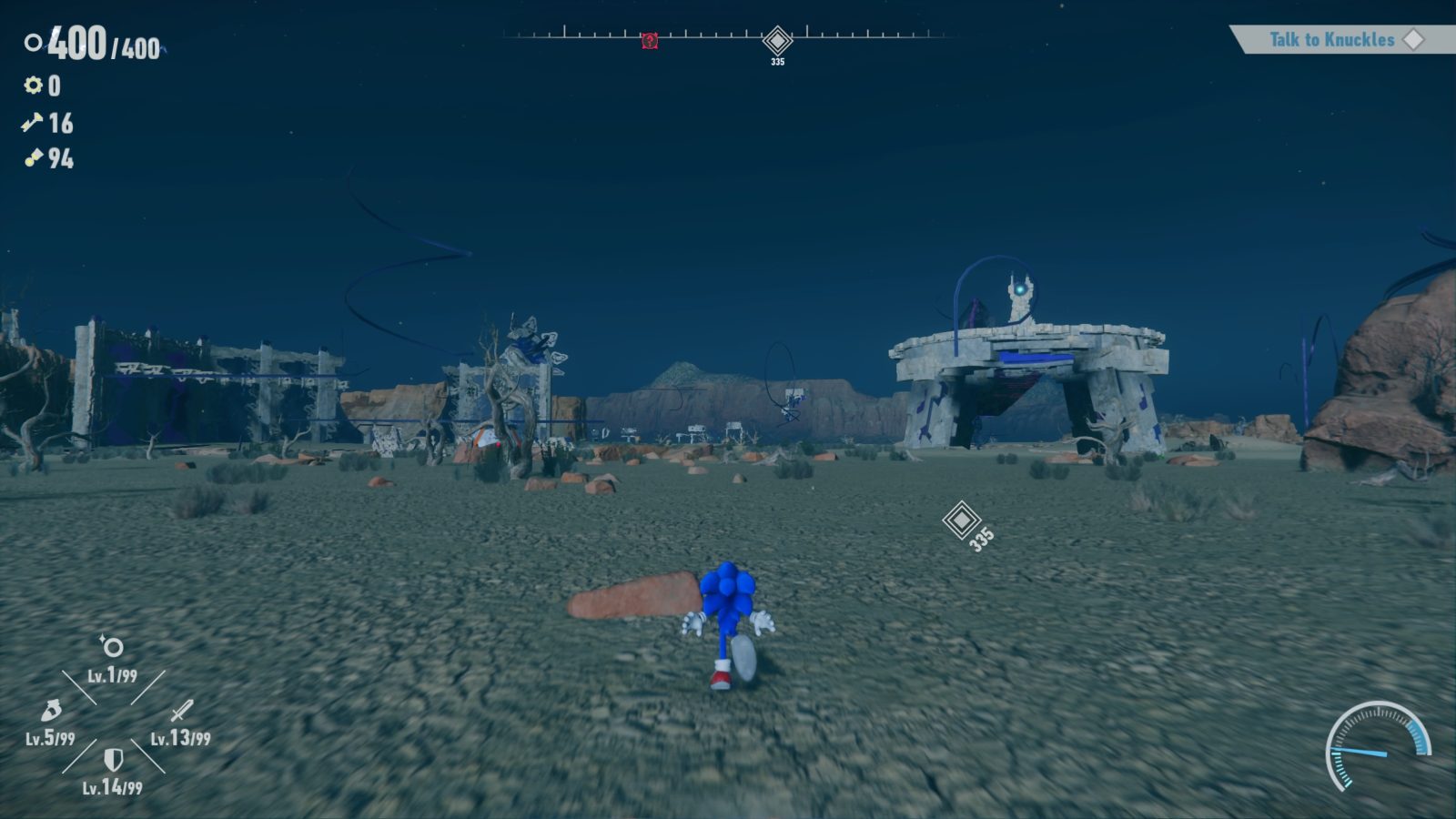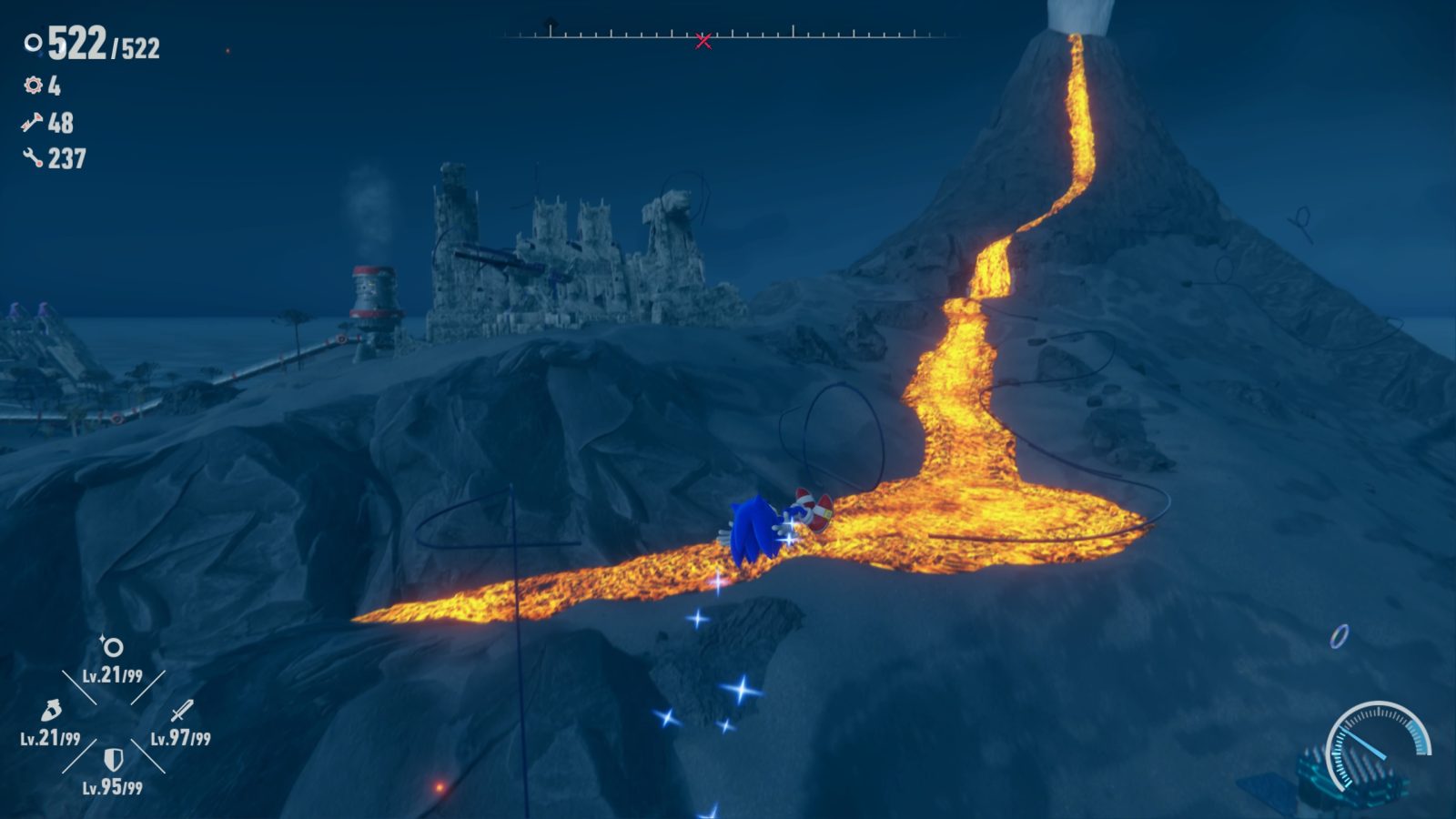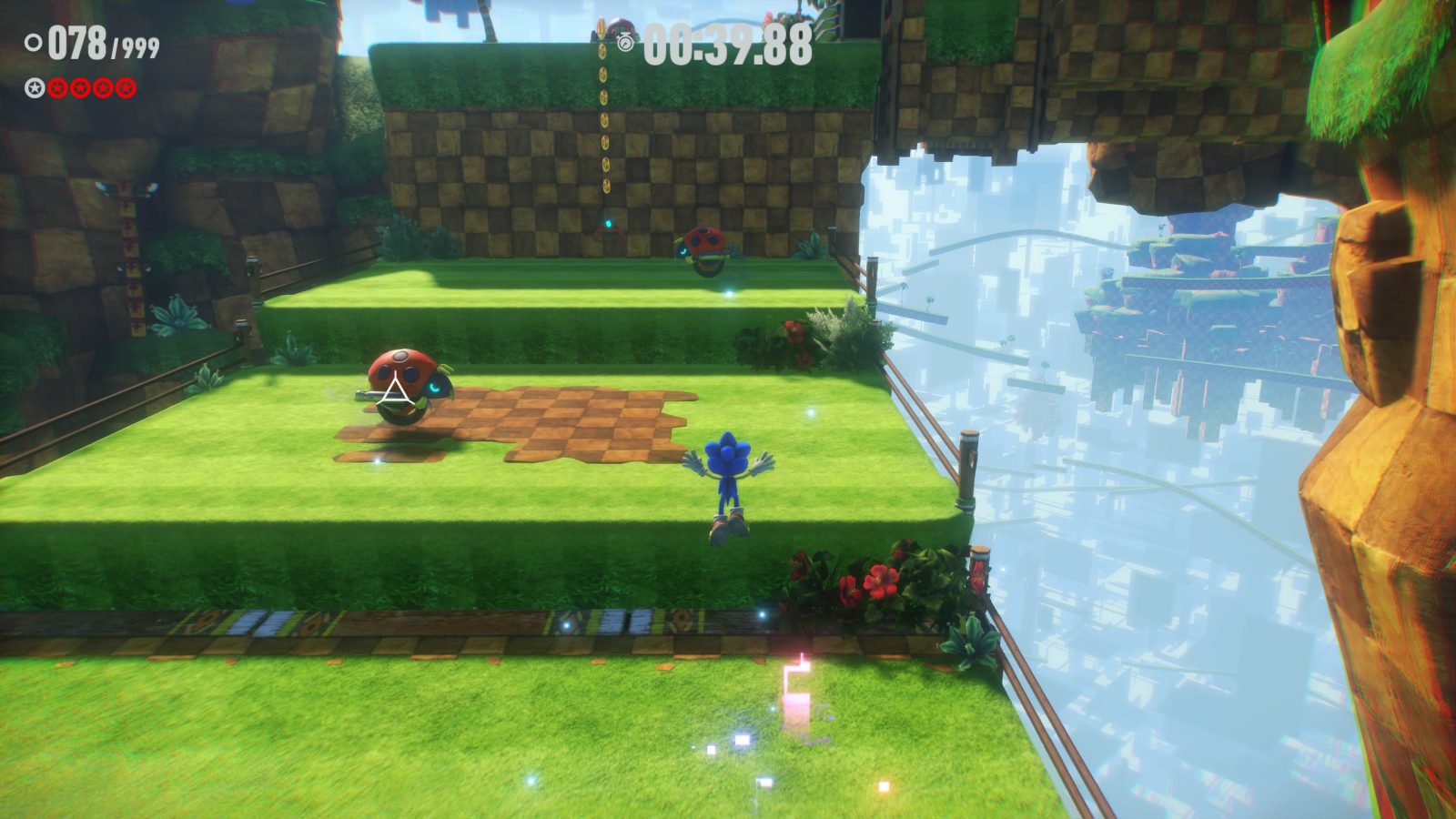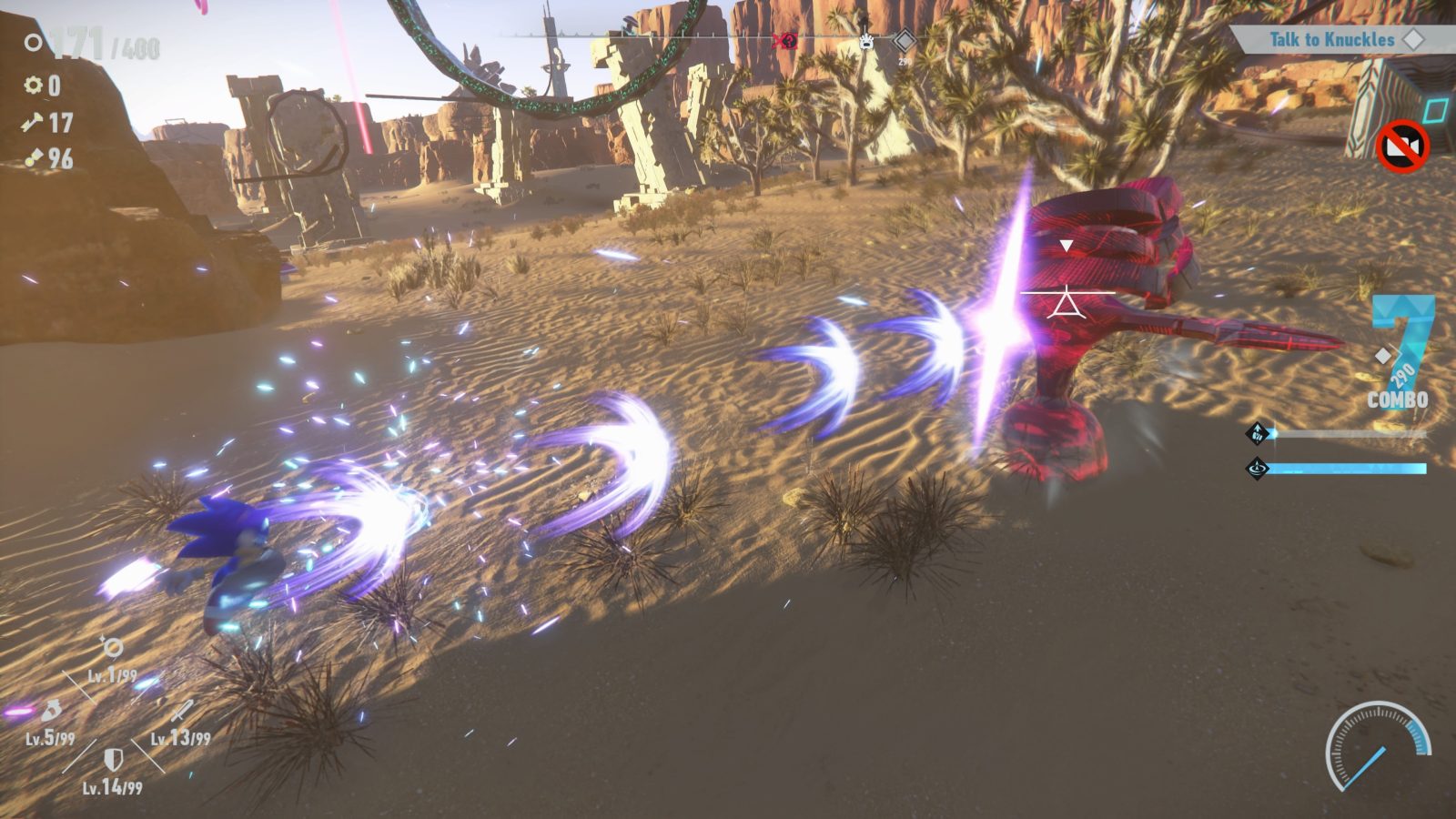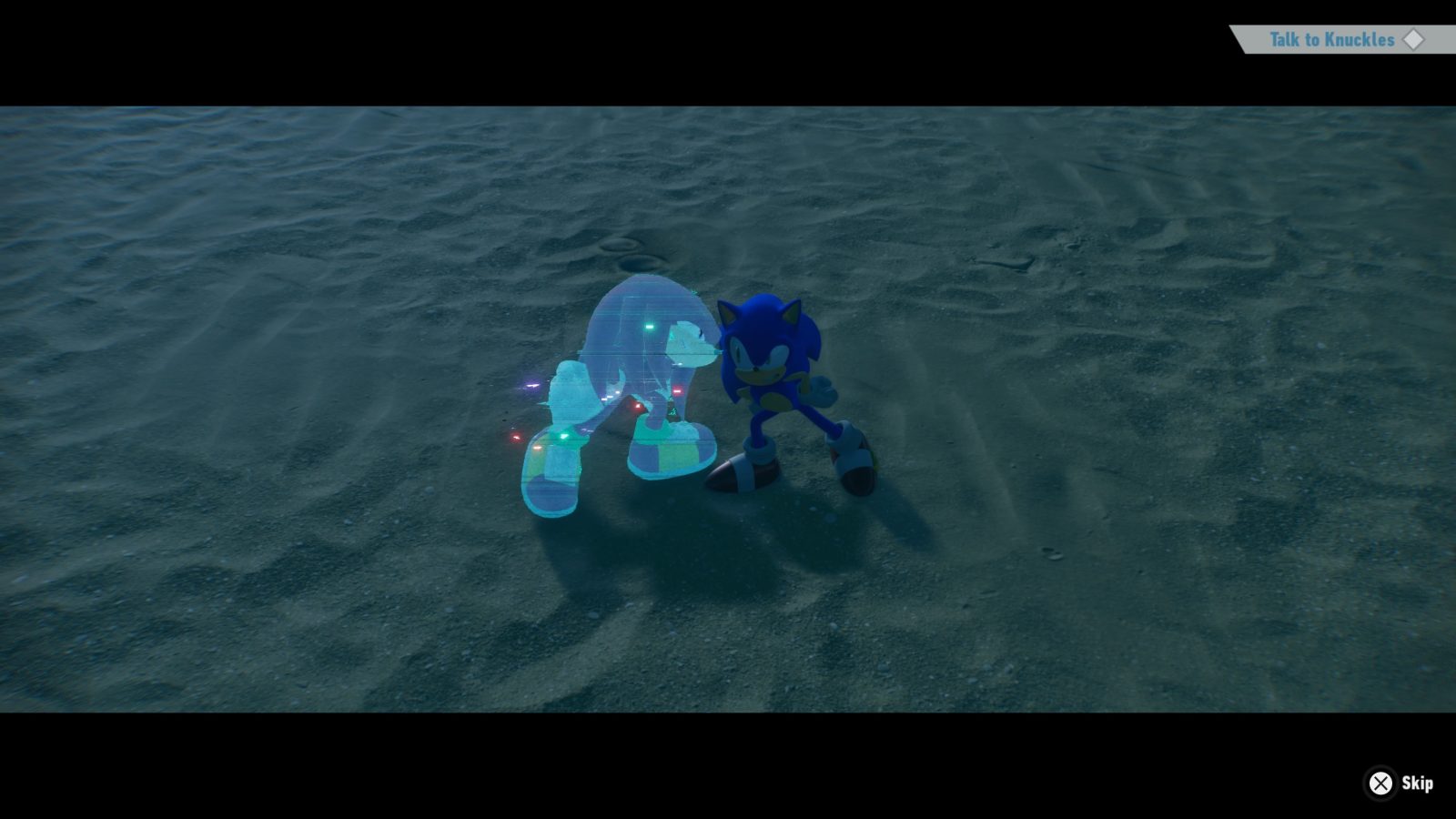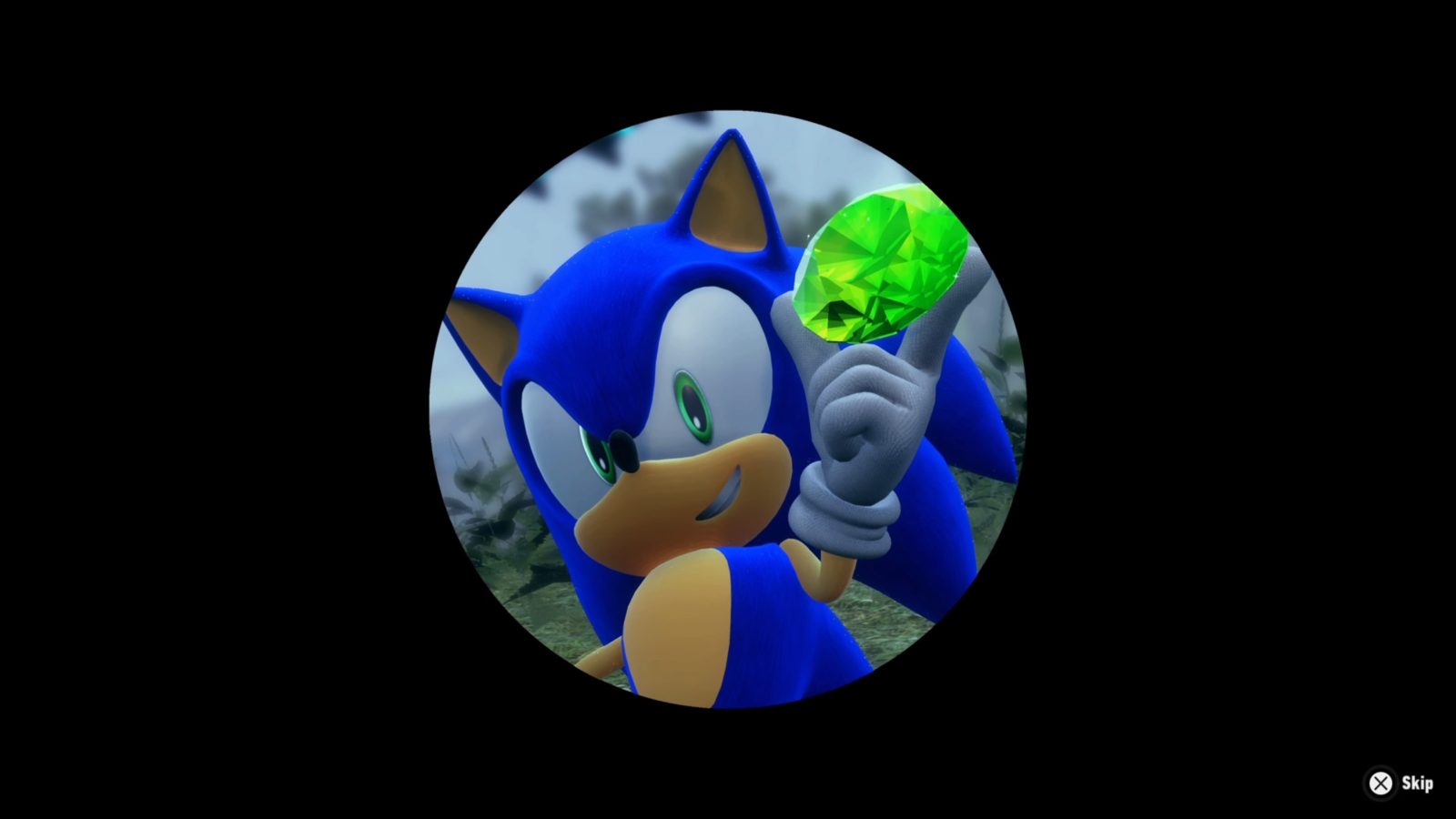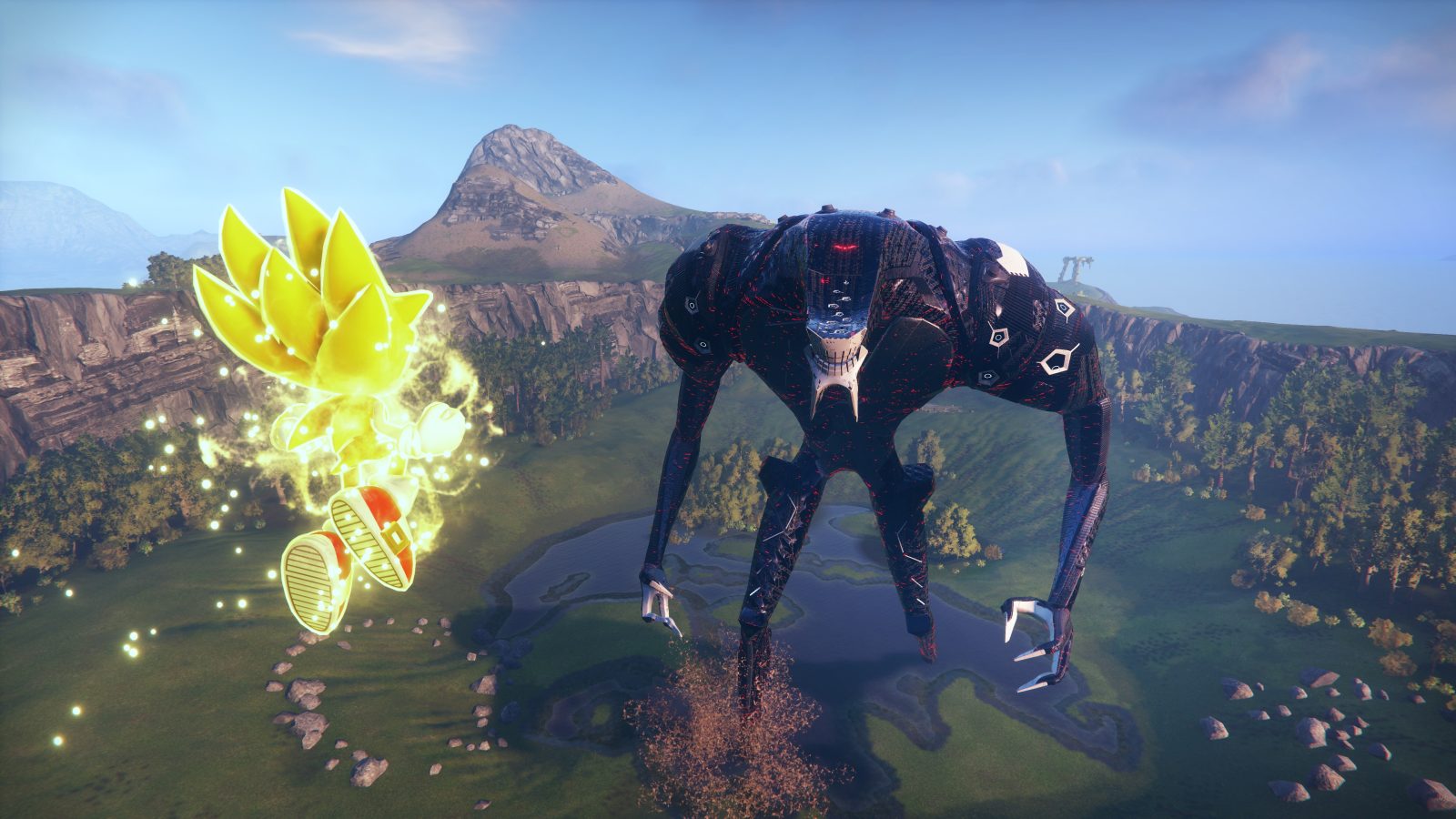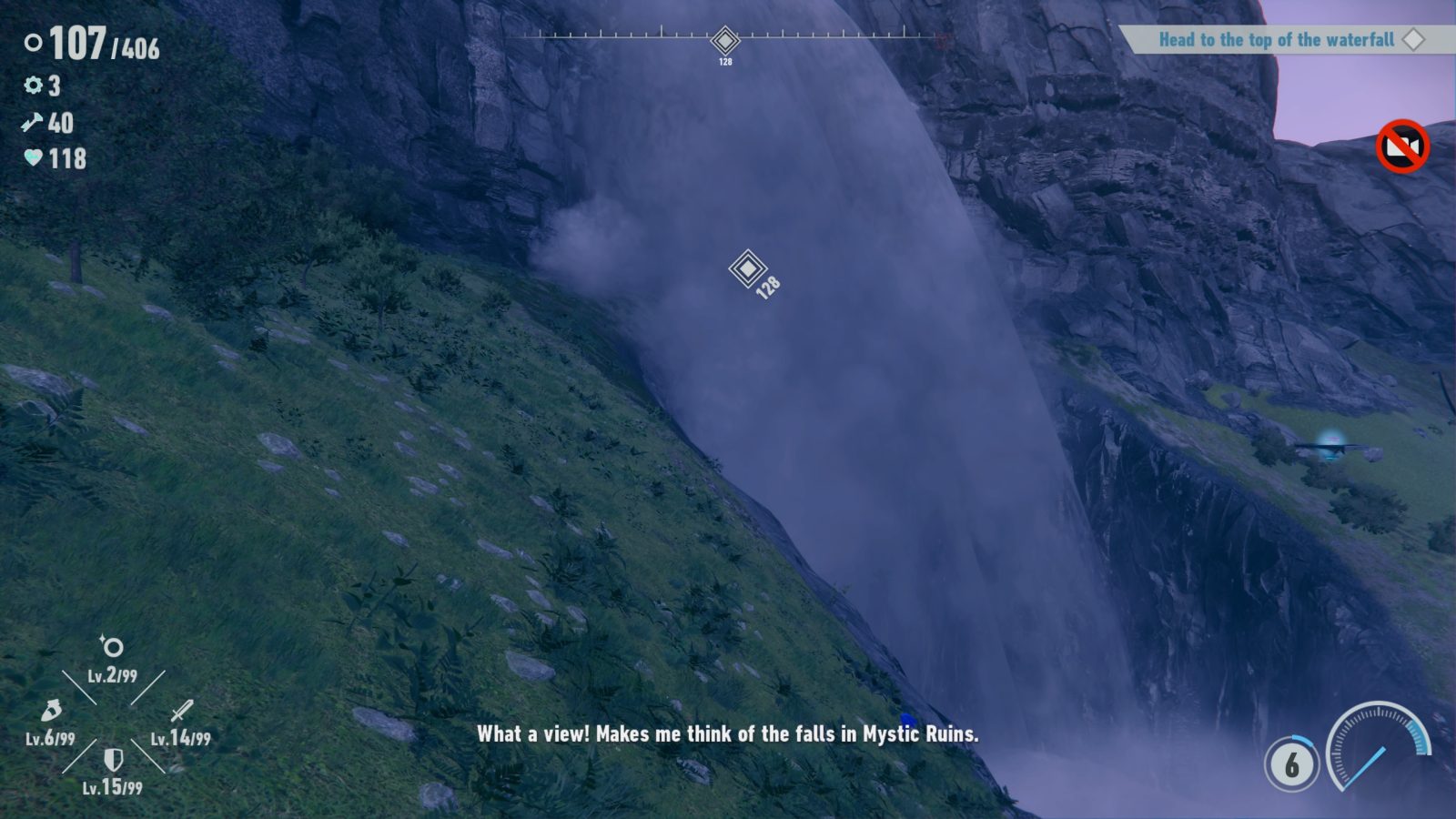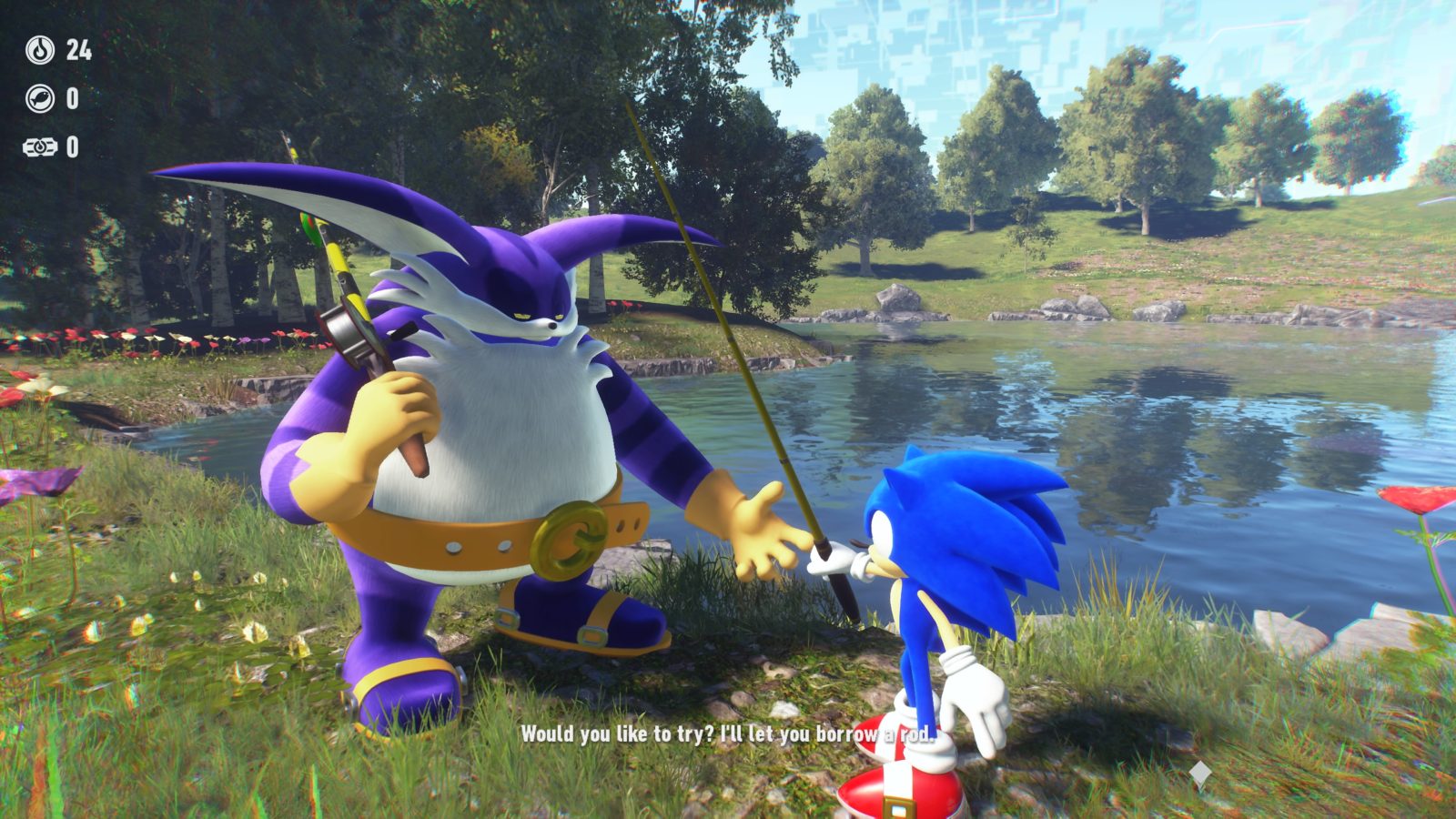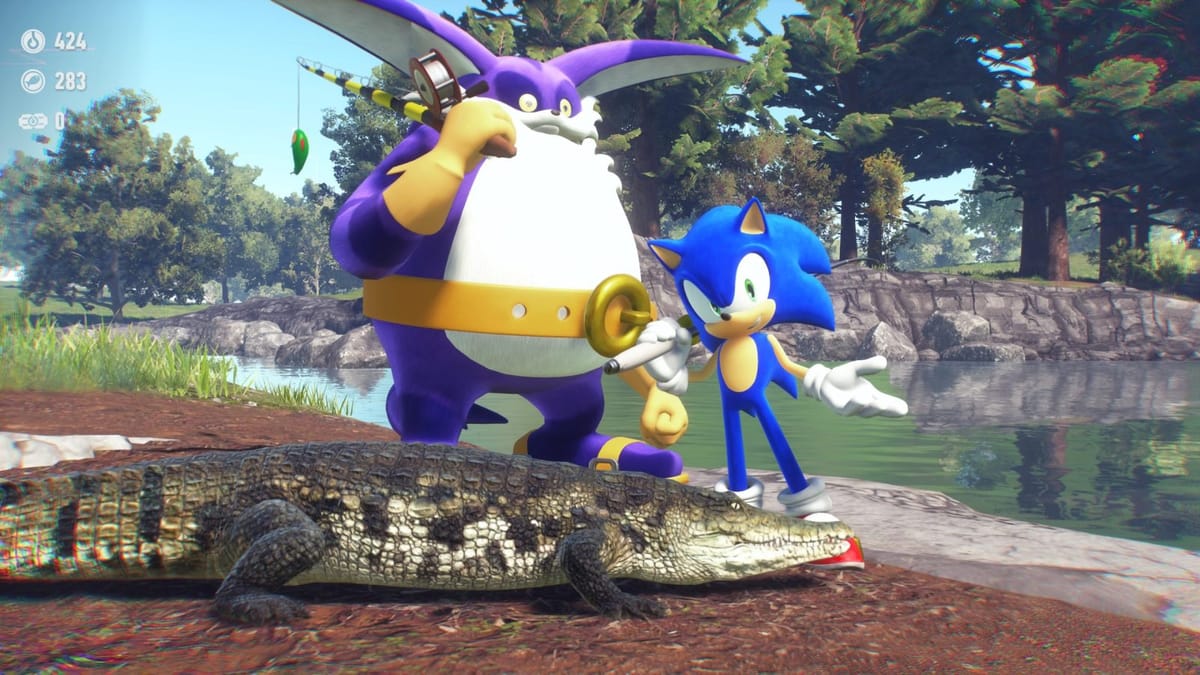
Sonic, Amy, and Tails have made their way to the Starfall Islands, where the Chaos Emeralds have mysteriously made their new home. Upon arriving, however, the three are sucked into Cyber Space, with only Sonic able to escape. Assisted by an ethereal voice, Sonic is able to free Amy from her torment, but her body remains trapped between the real world and Cyber Space. To rescue his friends, the blue blur must explore the islands, blast through Cyber Space, get the Chaos Emeralds, and defeat the massive Titans keeping his friends trapped all while contending with Dr. Eggman’s newest creation, Sage.
Everyone knows that there is no subject in gaming more sensitive than Sonic, so GamingTrend has brought in two(!) accredited Sonic professionals for a double review: David Flynn and Jack Zustiak have teamed up to talk about Sonic’s latest adventure.
Jack
Sonic runs in many different directions and defines himself in many different ways. Five years have passed since Sonic’s last jaunts were released. Due to that time gap, Sonic Frontiers not only marks the latest entry in the franchise, it also provides an increasingly elusive glimpse into the current direction of Sonic. That’s important, because if there’s one thing everyone seems to have an opinion about, it’s where Sonic should be running. I carry my own bundle of anxieties over where the blue critter has been and where he should go.
You may be expecting a critique of the new Sonic game, and that’s here of course, but what I’m really reviewing today is the state of Sonic’s soul. Frontiers offers a surprising amount of insight into that subject. I recognize that not everyone cares about this abstract melodrama (where’s the proof that cartoon hedgehogs even have souls?) nearly as much as I do, however, so I’ll get to the point. Sonic Frontiers has one foot noticeably stuck in the past, but overall takes many promising steps towards the future.
If I were to pinpoint the aspect of Sonic games that initially hooked me, I would say it’s their sincerity. Sonic is filled with meaning that most characters like him do not approach. Characters like Mario were designed to be abstract vehicles for players to control games. The game design process itself drove the character Mario became. Sonic differed by being designed from the start to be a specific character and convey specific messages. Sonic games go out of their way to include distinctive music, themes, and stories that propel Sonic beyond being “just” a game. These aspects separate Sonic from his platforming contemporaries while also helping the character to endure in peoples’ hearts.
Modern Sonic games retain some of those distinctive elements of sincerity, yet in some ways they also work very hard to mute them. Plenty of people will make the argument that Sonic got bad or whatever, but I, more or less, disagree. The things people regularly beat Sonic down for are actually his strengths. His experimental nature, his characters, his worlds, his themes, messages, soundtracks, and designs are all part of what makes Sonic special.
Still, the nature of bigger business demands that you try to please everyone. For Sonic, this often translates into playing things safe: he needed to stick with gameplay that the developers knew people liked, the stories had to stop being about anything substantial, and the focus had to be narrowed to Sonic and at most give a tertiary view of his core cast of friends.
When we last left Sonic, he was arguably at his safest: we had an admittedly very well-done throwback game in the classic Sonic style that Sega knows people liked with Mania, and a modern Sonic game that went back to the gameplay style that three of the prior four Sonic games had done with Forces. They even threw classic Sonic into Forces for extra safety.
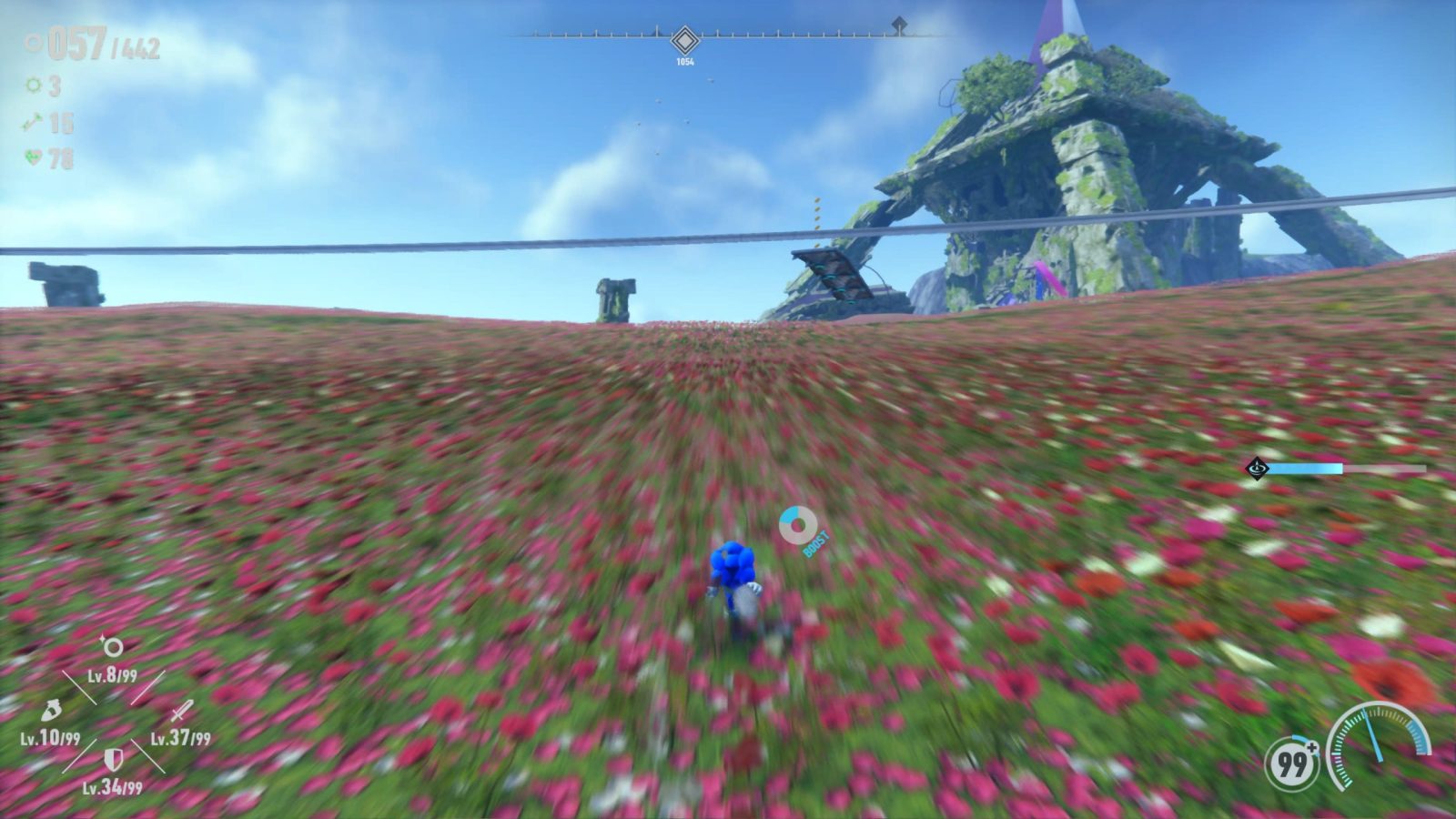
Regardless of whether or not you think Sonic Mania is the greatest Sonic game ever made, or whether or not you think Forces was the worst Sonic game ever, they pose an existential dilemma. If you accept the premise that because it was succesful all Sonic games should be like Mania going forward, you are essentially saying that Sonic as a franchise is over. A key part of Sonic as a series is its willingness to shake itself up. Sonic as a character represents a sense of freedom and creativity, and to endlessly mine the same ideas is antithetical to what these games (and the character) are all about. Sonic producer Takashi Iizuka once stated that a Sonic that doesn’t impress or surprise you isn’t Sonic, and I’d have to agree. Throwbacks like Mania and retreads like Forces are a retirement plan, not a path towards the future.
All of this is to say that there’s a level of bland pandering (blandering?) that has manifested in various forms of Sonic games since 2010, and 2017’s Sonic games felt like a culmination of it. The games can still be fun, but direction never inspired confidence in me. To make matters more frustrating, with the rising length of game development, Sonic has been stuck in this limbo for some time. I want Sonic to feel like Sonic again, not an inoffensively appealing imitation of Sonic, and so I’m desperately looking towards Frontiers to shake things up.
In some ways Frontiers rebels against many of the trends that ail modern Sonic games. In other ways, it’s the final form of pandering. Frontiers bills itself as a bold new direction for Sonic, yet I think most longtime fans will find plenty to recognize in this game. Perhaps a little too much, which makes me hesitate to say that this game is everything I was hoping for a new Sonic game to be. It takes some important steps towards what I want, however, so let’s break down what those steps are.
Frontiers innovates primarily with its “open zone” structure, so let’s talk about what the heck that is supposed to mean. At its core, Frontiers focuses on traversing giant landmasses filled with tiny bits of Sonic level design reminiscent of the last several games like Colors, Generations, and Forces. This structure technically follows a lot of typical open word convention. You have a wide open map to explore and plenty of markers on your map for collectibles to grab and objectives to complete. Despite this, Frontiers avoids feeling like a typical open world game. You’re not exploring the world so much as you are constantly pinging between bite-sized bits of Sonic levels.
The “open zone” accomplishes this because despite the wide open nature of the giant map, what you’re actually doing is locking yourself into mini-levels for seconds at a time. If you hit a dash pad or spring, you’ll suddenly find yourself switching into a two-dimensional view and doing some platforming, or grinding from rail to rail in a linear sequence. You are constantly transitioning in and out of the open world and into these more linear bits of level design, which creates a sense of pacing that side content in other open world games cannot convey. You never feel like you’re getting bogged down in one thing here, because these sections are typically over in 20-30 seconds at most.
If we’re being pedantic, and if you’ve read the last several paragraphs, you know that’s what I’m all about, there have been “open zone” elements to previous Sonic games before this. Games like Sonic Adventure and Sonic Unleashed have semi-open hubs that often had little platforming tangents you could go on to find collectibles, upgrades, and secrets. However, those games conveyed an unspoken distinction that these “open zones” were the “side content,” not the “real game.” The actual linear stages formed the “real game.” Sonic Frontiers reverses that balance. The open zone is now the “real game” and the stages (in the form of what the game calls Cyberspace levels) are the “side content.”
This approach creates a nice and breezy game pace. It’s a Sonic game where you’re almost always in the action and moving onto something new. It alters how the game feels to play, even if ultimately the biggest change here comes from the delivery of Sonic content more than the nature of the content itself. Sonic games often rely on speed and can have some short stages, but they have never done something that plays with constant barrages of content like this.
The biggest issue Sega regularly confronts with Sonic is that it’s difficult to make a Sonic game that lasts more than a handful of hours. Sonic games are traditionally made to be replayed in order to compensate, but I imagine that short game length is something the developers would avoid if they could do so gracefully. I suspect that’s why previous “open” areas came into existence, and it almost certainly explains the more dramatic shift to emphasizing them in Frontiers. With this game’s more open structure, the developers can create a lot of smaller content in order to fill an overall much bigger game. Perhaps the biggest feat Sonic Frontiers accomplishes is that they’ve restructured the formula into a much longer Sonic game without sacrificing the character’s inherently speedy nature.
However, Sonic’s game structure has remained relatively stable for most of his existence. You could argue that a linear stage-by-stage structure defines Sonic just as much as anything else about his games. Sonic uniquely thrives on spectacle – you generally spend each game going through distinct levels with memorable quirks that only further burn into your brain as you replay them. The “open zone” technically contains many distinct bits of level design, it just blurs together in a way more traditional stages do not because you move on from each section so quickly. The open zone must be taken as a whole rather than in individual highlights, which results in a very different way to enjoy Sonic than what a fan may be looking for.
Cyberspace levels exist to fill that void. They give that impression at least initially, anyway. As you complete them, you notice Frontiers demotes these stages to side content in disappointingly noticeable ways. Hopefully you’re not sick of Sonic mainstays like Green Hill or Chemical Plant yet, because you’ll be seeing them plenty in this game. Each level cycles between a small handful of aesthetics. Most if not all of the levels literally reuse the actual design of the stages from previous Sonic games in this style. Even when the stages may not be reusing the exact same arrangements of platforms or grind rails you’ve seen before, the Cyberspace levels emphasize the biggest weakness Frontiers has: the enduring sense that you’ve done this all before.
Structure separates Frontiers from its predecessors in key ways, but it fails to remove itself from them completely. With Frontiers, I ultimately found myself playing yet another Sonic game based around the “boost” formula that Sonic Unleashed established fourteen years ago and it’s not much different here. That means I’ve been playing this style of Sonic game for about half of my life. To be clear, this isn’t a bad style of game – it is just a style of game that has been explored thoroughly at this point, and it feels especially played out in light of the deja vu approach to the cyberspace levels.
To their credit, the developers have made numerous little mechanical changes that address some of the trappings of the “boost” game design. Sonic can no longer brainlessly boost through enemies, you have to actually be careful when it comes to maneuvering around them. You have more control over Sonic’s movements than recent entries like Forces, so the game as a whole feels less automated and restrictive. The tweaks to the boost mechanics are appreciated, they just don’t fundamentally alter a style of game that has long since peaked.
More pressingly, the boost design frequently shows its mechanical limits in this game. There are many remakes of stages from the Sonic Adventure games and while interesting as a curiosity, they mostly highlight how restrictive this approach to Sonic mechanics happens to be. With the “boost” style, the game must account for Sonic’s ability to conjure high speed out of nowhere at all times. As a result, the level design has to restrict how Sonic can move in different situations and build safety nets for Sonic to catch him in 3D space. There’s really only so many ways to do that gracefully, and when you go beyond those standard conventions like the Adventure stage remakes do, things begin to feel off.
As far as new game mechanics go, the main addition Frontiers adds is Sonic’s ability to fight. Sonic no longer limits himself to jumping on enemies or bashing into them with his face; he took some karate lessons and now he’s ready to punch and kick his way to victory. Combat translates surprisingly well into the rest of the game largely because there isn’t much to it. Most of the nuance comes from knowing when to parry (which is extremely lenient) and chaining your unlockable skills together to do more damage. Otherwise, you’re pretty much mashing buttons while watching Sonic do cool moves.
Frontiers provides a substantial amount of enemy types. What I most found interesting about these enemies, however, is that they don’t actually rely that much on Sonic’s newfound martial arts to be fun. The best enemies challenge the platforming aspects of Sonic’s abilities in weird ways rather than have him beeline towards beating them down. Some enemies require Sonic grind on rails, others have to be chased down on foot, and so on. These decisions naturally integrate the combat encounters into the game rather than having it feel like a totally separate idea that was grafted onto it.
Ultimately, the simplistic combat mechanics come across more as a tool for conveying Sonic’s coolness more than it being a substantive addition to the formula. That’s okay with me for two reasons. One, it adds some variety to the open zone activities unique to this game. Two, it emphasizes Sonic’s personality through the combat’s flashy nature.
Remember when Sonic had a personality? Yeah, I mean technically he always has an attitude. He also used to feel like a real character, though. His games would have stories that had distinct themes and were about things. Usually there would be some vocal songs thrown into the mix to beat you over the head with the point in case you missed it.
Well, I’m happy to report that Frontiers mostly brings that all back. There’s a real story here, there are real themes, and Sonic (plus his friends) feel like real characters. I easily enjoyed Frontiers’s narrative more than any other Sonic story in the past decade.
It wasn’t love at first sight. One thing I will note about the story of Frontiers is that it takes a passive approach to storytelling. The real premise, themes, and stakes of the story hide in a fog of vagueness that only becomes clear in the final act. Given the mysterious nature of the islands, this approach fits, it just means the story was not something that actively drove me to keep playing. The more I reflect on the story as a whole, however, the more I appreciate it. The ways it explores stagnant civilizations and contrasts them with the malleable and ever-changing nature of Sonic reflects how I have been feeling about Sonic as a whole in oddly relevant ways.
Where the story elements truly shine are in the conversations with Sonic’s friends. There’s a part at the end of Sonic Adventure 2 where for about three minutes, the characters drop all their pretenses and are genuine with each other. No posturing, no quips, just the characters sincerely reflecting on what just happened to them and what the future holds. It’s my favorite Sonic cutscene of all time, and in its best moments, Frontiers taps into a similar energy. Sonic sits down and has some wonderful heart-to-heart conversations with his friends in this game. These moments were what compelled my interest in the narrative more than the main plot itself.
Those scenes strike me particularly hard because they are noticeably different from the kind of dialogue that Sonic games have been filled with for some time. Sega specifically hired Ian Flynn, a longtime writer for the Sonic comic books, to write the English version of this game and the difference shows. The characters feel like themselves, the dialogue doesn’t constantly feel like a joke, and there’s a sense of respect and cohesion that I can appreciate as a longtime fan. For the most part, anyway.
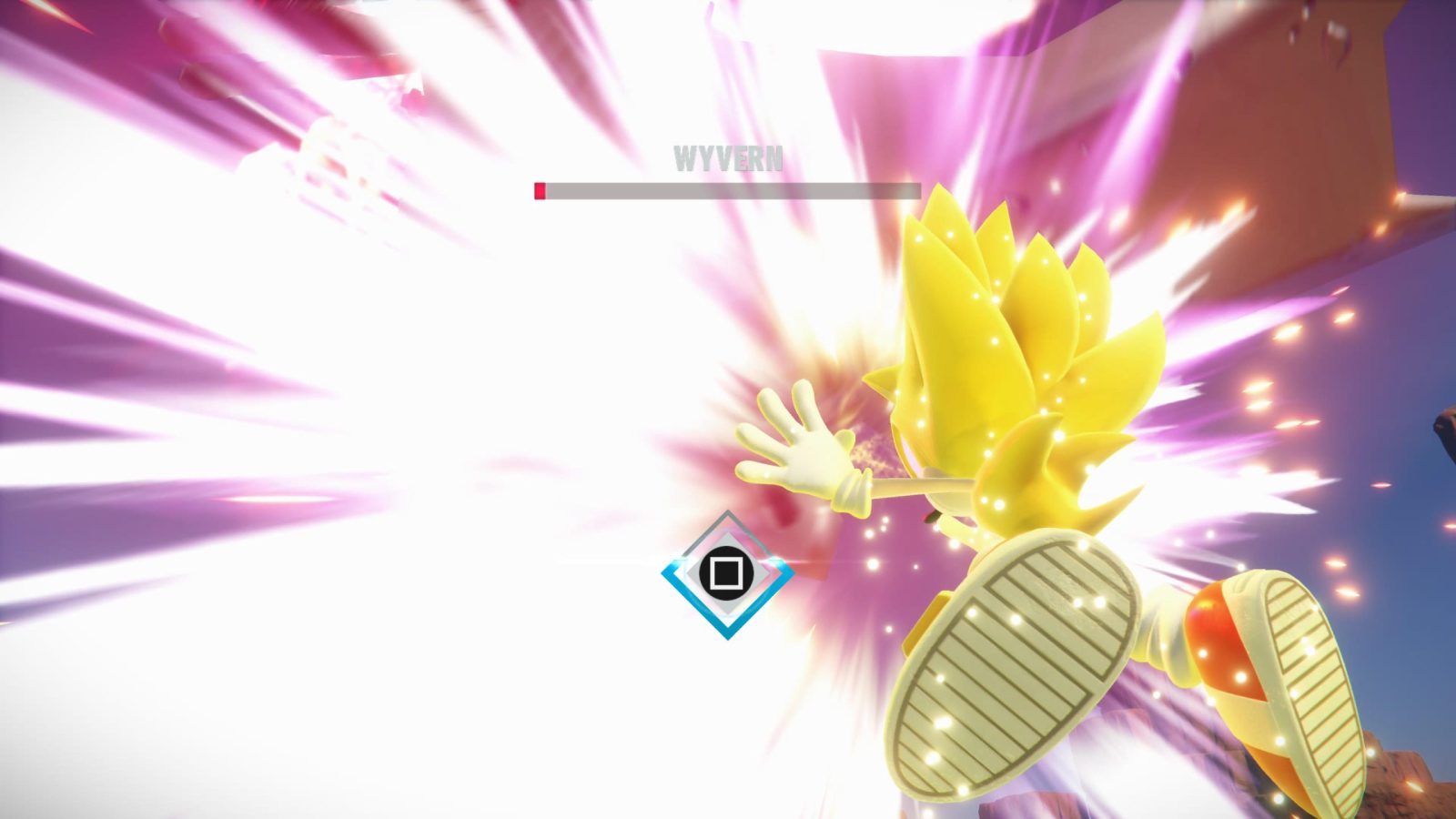
Mr. Flynn’s heart is in the right place, but I think his superfan nature muscles into the writing a little too heavily here. I don’t mind some references to continuity obviously, it helps make the world natural to an extent. The dialogue just often falls into what I would describe as “resumé” mode, where the characters will list off previous events and references to lore tidbits in ways that feels a little too pandering and unnatural.
Don’t get me wrong, the writing stands leagues above what we’ve been getting for Sonic games lately, this is more of a distracting nuance than anything. You can sometimes tell the difference between a fan looking to amuse other fans and someone who is there to tell a brand new story through stuff like this. Mr. Flynn’s comic book background becomes most evident in the way he indulges in continuity, because many comic books are plagued with this same kind of thing. I really just want games that feel like they were 100% written by Sonic Team. I don’t need that story filtered through to me with extra winks and nudges asking if I remember things about Sonic. Arguably, the last thing I need is positive reinforcement for how much I remember about Sonic!
Alright, I’ve met my quota for whining. The Souldometer has been filled with obsessive fan energy so we can now briefly glimpse into the state of Sonic’s soul. Close your eyes. Wait, open them back up or else you can’t read. The Final result? it’s still a little dim, yet Sonic’s soul appears to be flickering back to life. Well, good enough for me!
I readily acknowledge that I’m the picky kind of Sonic fan who scrutinizes everything. I treat the game this way because I care about this series a lot. I’m not just thinking about the game itself; I’m thinking about the long-term consequences of the game. If I’m honest, Sonic Frontiers does not check every single box that I’m personally looking for. If I’m being even more honest, it doesn’t have to do that in order to be a great game.
Frontiers fills me with confidence that Sonic’s soul will continue to brighten. I don’t necessarily need an exact sequel to this game, yet I can see the foundation it builds clearly. That may not sound positive, but the way I see it is that the “open zone first” Sonic dichotomy has now been sufficiently explored. Now I am hoping the developers don’t get complacent and continue to push Sonic into new directions. Maybe that comes in the form of something more balanced between openness and linear stages, maybe they overhaul Sonic’s mechanics entirely, or perhaps they do something I can’t even imagine. Frontiers explicitly promises change in the next game, you could say it’s the most important theme of the game, so I hope the next entry continues running with sincerity towards the future.
David
I largely agree with Jack’s points, but I see the references both in gameplay and story as more reverence of the past. Sonic used to change constantly between entries, adding new characters, gameplay styles, and trying new things with the story. This has become less and less a part of the franchise since around 2006. That year’s double whammy of Sonic the Hedgehog (PS3/360) and Sonic the Hedgehog (GBA) cemented the character as something of a laughing stock in pop culture. Sonic 06 was crushed under the weight of its own ambitions and a lack of proper development time, while Sonic Genesis for the GBA was a strange mangling of the original game. Sonic Unleashed was the final nail in the coffin; while the daytime stages were an excellent rendition of 3D Sonic, players and critics were more than frustrated with the action oriented Werehog segments. Since then, Sonic Team has tried to play it a bit safer with the only major deviation from the Classic and Modern styles cemented by Sonic Generations being Lost World which… well, let’s not get into that. This all culminated in Sonic Forces; a game that is enjoyable in some ways, but lacks the heart and passion that made me a lifelong Sonic fan since I played the Genesis originals way back when.
Sonic Frontiers is a big shakeup in that regard. The game is focused on its own spin of the Open World design that’s currently saturating the market with “Open Zone” islands. You’ll explore five islands (though really four, with one mostly serving the story and as a test of skill) by running, boosting, engaging in combat, and solving puzzles. Your main goal on each island is to find six Chaos Emeralds, with the seventh being held by the Titan you fight as a boss. You access the Chaos Emeralds by completing Cyber Space levels and earning keys. You enter the Cyber Space levels using gears obtained from defeating mini-bosses. And finally you defeat mini-bosses by finding them and engaging them in combat.
The game controls incredibly smoothly, with Sonic able to jog at a reasonable pace yet boost at high speeds while still being able to turn on a dime. You move with the left analog stick and press and hold R2 to boost, using up a stamina meter that automatically replenishes when not boosting. Sonic can also double jump, drop dash by double jumping then holding X for a third time, light dash through paths of rings by pressing L3, stomp by pressing circle in midair and bounce by holding the button, encircle enemies with the new Cyber Loop by holding triangle, and homing attack with Square if you have a target. It feels like a nice mix of SA2 and Generations, though you’re not really required to master this moveset in any sense of the word sadly.
This is slightly better in combat, where you can use a variety of moves to dispatch your cyber foes. You’ve got the homing attack into a string of punches and kicks, then transitioning into a barrage of energy attacks, creating a Cyloop around them to launch the enemy, and then finishing them off with a phantom rush. Combat is pretty easy, even on the hardest difficulty, but the fun comes in figuring out how to optimize your damage to kill things as quickly as possible. I prefer to build up the phantom rush meter using weaker, rapid attacks, then destroying robots with it while being ready to dodge or parry attacks. It’s not complicated by any means, but it’s a lot of fun when it’s on your terms.
Some of the bosses on the overworld do take that agency away from you, however. For some this isn’t a problem, just a fun, short minigame, but things like the rail loop boss or the tornado boss can be a huge pain to deal with. Their attacks just don’t let up and you’re in a specific situation where you’re essentially defenseless aside from giving up your attack and just trying that phase again. There are plenty of bosses out there that you can skip these two, but it was frustrating whenever I ran into them regardless.
Super Sonic is the culmination of everything this combat system represents. In these encounters with the titans, you need to defeat them before you run out of rings, with your maximum number of rings depending on your Ring capacity stat. There’s no good way to replenish here and they have massive amounts of health, so you’ll want to learn their patterns and have an answer to every attack. These are a ton of fun and a good way to cap off each section, with some rocking music to boot. Most music in the game is more understated, so this is a nice change of pace. Even the Cyber Space levels sound subdued, which is a bit disappointing, but it’s still a great soundtrack. Sonic has never had a problem with music, and that trend continues here.
Frontiers’ open world design is something I’ve dubbed “ADHD the video game.” That’s not a knock on the game (or anyone with ADHD for that matter), far from it. The world is filled with so many things to do and you can easily flow from one thing to the next, it can be easy to get caught up in that momentum. One second you’re doing small platforming challenges to earn memory tokens to advance a character’s story, then you find that challenge drops you right next to a mission which unlocks segments of the map and oh what’s that in the distance it’s the next Cyber Space level you need to unlock the Chaos Emerald you passed earlier. You’d think this would make the game feel pretty short too, but I hit the credits at about 15 hours which is pretty lengthy for a platformer.
Because of this great flow, I feel like the Open Zone concept is fully explored here in Frontiers. This doesn’t need to be the next decade of Sonic, because it is a complete thought in one game. I’d be down for some DLC, especially if it introduced new friends like Blaze (please SEGA), Shadow, or Tangle and Whisper from the comics. The character interactions here are a delight, with Sonic and Amy actually feeling like they have romantic chemistry for once, Sonic’s rivalry with Knuckles feeling just right, and Tails actually growing and wanting to break away from Sonic. There are actual character arcs here and they’re great! The constant references to past games can be overbearing at times, but I do feel like it’s in an effort to pay respect to ALL of Sonic’s past rather than pander to hardcore fans such as myself.
Still, I think they work better when they’re off to the side like in the unlockable Eggman Voice Memos, where Mike Pollock absolutely knocks it out of the park even without being able to bounce off of anyone. He gives the character such a refreshing nuance, and even develops his relationship with the new villain, Sage, a bit more. That relationship in particular really could have used more spotlight over the course of the game, because while I really like Sage her character development and story isn’t paced well. I imagine this is difficult to achieve given the structure of the game, but it still felt a little tacked on and I wanted to see more. The story is character driven here, with the plot feeling a bit flat, so even more character interactions would have really made it shine. Animations in cutscenes are also pretty flat, with most just consisting of two characters standing next to each other and flapping their gums.
Back to the action, the writing’s reverence for the past continues in the Cyber Space levels, which each reuse a level layout from a previous Sonic game. While this is a pretty cool way to reuse content, you can clearly tell where a level was bent or adjusted in such a way to better accommodate Sonic’s new moveset, like making certain sections longer or shorter to allow you more reaction time or add red rings. They’re fun, but they can be a bit frustrating when a level’s layout still feels at odds with how you normally play the game, like the game seemingly wanting you to boost when you’re actually supposed to slow down and platform. Still, these moments are fairly rare and you don’t spend too much time playing these levels. I do find achieving S ranks is still too easy aside from level 1-2, but they do a good job of giving you reasons to fully complete them.
The open world has a few minor issues as well. For whatever reason, I found Ares Island in particular difficult to navigate, with a few areas in later islands being confusing on how to reach. Usually there are multiple routes to get to your destination and you can choose however you want or swap between them, but there are moments where there’s only one route and it’s not where you would think. These sections are often where crucial story moments and portals are, too, so I would encourage you to not stress about completing the story as quickly as possible and just take your time exploring.
Each island also has one or two portals to fishing spots with Big the Cat. Here, you can borrow a rod (for a price of purple coins) and fish while listening to lo-fi music with your new best bud. This is an incredibly relaxing diversion, and shows how nice fishing in a sonic game can be when it’s on your own terms. It’s very mechanically simple, but again you’re just here to chill. Any fish you catch here earn you tokens to spend in Big’s shop. You can buy valuable resources like gears, keys, memory tokens, and even the stat enhancing seeds and koco along with the Eggman Voice Memos (which I highly recommend you listen to). Later on in the game, the shop becomes invaluable in fully completing everything like maxing out your stats or even just getting enough tokens to access the final boss. It can feel a little cheap to do this, but I just see it as another route to your ultimate destination – it’s up to you how you get there.
Finally, let’s talk about the visuals. While the game is gorgeous, even on PS5 there’s a bit of a pop-in issue. While normal terrain looks fine at any distance, elements like rails and other platforms have a tendency to show up only when you’re almost on top of them. Weirdly this isn’t the case with all of them, just most, but it’s jarring and can make navigation more difficult. There are some gorgeous vistas here, especially in the first and last islands, so it’s disappointing to have the overall visual fidelity marred by this technical hiccup. On PS5, you also have two graphics options, high resolution and high framerate, and I would highly recommend the latter just for smoother gameplay. It’s still gorgeous regardless, and I wish the game had a photo mode.
Sonic Frontiers
Great
Frontiers boldly plants one foot into the future with its “open zone” structure while keeping the other stuck in the past with mechanics and level ideas that are over a decade old. This approach results in a satisfying game even if it does not push the series into as many new frontiers as it could. It still hits many of the right notes that long-time fans will appreciate and works especially hard to satisfy those who have felt like the past few Sonic games have been missing some personality.
Pros
- “Open Zone” structure genuinely shakes up the experience
- Never bogs you down in any one activity
- Channels the sincerity of Sonic
- Big the Cat
Cons
- Long-time Sonic fans will find many aspects overly familiar
- Open Zone navigation can be frustrating
- Weak moment-to-moment plot
- Does not fulfill all of Jack's hopes and dreams!

